


MEM Gains Approval Across the US – Los Angeles, CA. – Last month Modular Elevator Manufacturing made big news regarding HCD approval in California. It gained official approval for models of their MEM Elevator System in the state. But, now MEM continues to break news in the elevator and modular industry as well by adding projects in Connecticut, Illinois, Detroit – Michigan, Indiana, and Georgia this quarter.
The MEM Elevator System is a complete commercial quality elevator. It is a hoistway or shaft produced in a factory out of tough 4X4 inch steel, wrapped in drywall. Inside it contains all the elevator components pre-installed in the manufacturing facility. This includes the doors, wiring, the elevator cab, and all the buttons or hall calls. It arrives on a truck and put in place in a matter of a couple hours. When given power it is started up in less than a week.
First, MEM has produced and placed well over 100 elevators in several states, mostly in California. As MEM continues to expand and grow, jurisdictions once closed have become open to us. Along with the traction elevator approval this means more opportunities for inclusion in nearly all jurisdictions across the US.
“This is a gamechanger.” According to Hugo Beltran, Vice President of Sales. “National acceptance, recognition from HCD in California, and approval to place units in Illinois, Michigan and other locations expands our opportunities. But it also expands the possibilities of a better elevator system in most states and cities across America.”
“This is a game changer!”
Hugo Beltran – MEM Vice President of Sales
Beltran went on to say that with the national housing shortage, modular elevators can speed any type of project to a faster completion. Many of the ponderous steps involved with onsite installation are removed as the installation is moved to a factory setting.
The California Department of Housing and Community Development gave its approval for the MEM Elevator System HW2 – 3500 product earlier this month and it will be a game changer for the elevator and construction industry. The California HCD is the state agency responsible for overseeing the planning, development, and preservation of affordable housing, as well as managing various housing-related programs and policies in California. The HCD works on initiatives to provide safe, affordable housing for residents, promote sustainable community development, and address homelessness. They also support local governments with housing policy, zoning regulations, and funding for housing projects.
This is a game changer for Modular Elevator Manufacturing (MEM) to be approved by the HCD. It ensures that the elevators meet strict safety, building, and accessibility codes required by the state. This approval ensures that the elevators are compliant with California’s standards, particularly for modular homes and structures that often need specialized installations. Plus this speeds up the approval process by weeks if not months, significantly closing the time from concept to installation.
Here are a few key reasons why approval from HCD is so important:
This breakthrough in approval means that the MEM Elevator System structure no longer has to go through the local jurisdictional inspection process. In short, the approval by HCD is necessary for ensuring that MEM elevators are safe, compliant, and ready for use in California’s modular construction projects.
Although this is great news for Modular Elevator Manufacturing there are some restrictions that need to be explained. The designation is not on all MEM products. It is for only the HW2 – 3500. This is the best selling commercial modular elevator in California. But depending on your project it may have to go through the normal approval process.
The designation is also only for modular housing projects in California. Although, MEM distributes nationwide to a wide variety of vertical markets including, apartment complexes, commercial structures, school, colleges and universities, stadiums, hotels, medical facilities, and other types of industries, the HCD designation does not apply.
The building tie-ins are not a part of the HCD approval and must still undergo approval by the proper authorities.
It is however to good to know that the HCD has recognized the MEM Elevator System.
Finally, the construction industry will have an approved alternative to traditional elevators that slow the construction process. There is no more waiting on the elevator for projects that can use the HCD designation. As a result on these projects the elevator company will no longer get in the way and control the jobsite. Also, it speeds up the approval process by weeks if not months, significantly closing the time from concept to installation.

On a side note, the HCD designation is important for other reasons. It shows that the Modular Elevator Manufacturing process and approved products are of the highest quality. Also, they can meet stringent approval processes in most any jurisdiction. This has been seen in the many approved projects. Even in some jurisdictions that were thought to have been off limits in the past.
So, whether you are in California or any other state in the union you can be confident that the modular elevator you are purchasing is high-quality. They are even a high enough quality for approval in earthquake prone California.
If you would like more information regarding the MEM Elevator System for use in one of your projects please click the button below to request a Fast Track Quote. Also, you can request a factory tour to get a better perspective on the revolutionary MEM Elevator System.

MEM Gains HDC Approval – Los Angeles, CA. Modular Elevator Manufacturing has now gained official approval for models of their MEM Elevator System in the state of California. The MEM Elevator System is a complete commercial quality elevator. It is a hoistway or shaft produced in a factory out of tough 4X4 inch steel, wrapped in drywall. Inside it contains all the elevator components pre-installed in the manufacturing facility. This includes the doors, wiring, the elevator cab, and all the buttons or hall calls. It arrives on a truck and put in place in a matter of a couple hours. When given power it is started up in less than a week.
The California Department of Housing and Community Development gave its approval for the MEM Elevator System HW2 – 3500 product earlier this month and it will be a game changer for the elevator and construction industry. The California HCD is the state agency responsible for overseeing the planning, development, and preservation of affordable housing, as well as managing various housing-related programs and policies in California. The HCD works on initiatives to provide safe, affordable housing for residents, promote sustainable community development, and address homelessness. They also support local governments with housing policy, zoning regulations, and funding for housing projects.
This is a game changer for Modular Elevator Manufacturing (MEM) to be approved by the HCD. It ensures that the elevators meet strict safety, building, and accessibility codes required by the state. This approval ensures that the elevators are compliant with California’s standards, particularly for modular homes and structures that often need specialized installations. Plus this speeds up the approval process by weeks if not months, significantly closing the time from concept to installation.
Here are a few key reasons why approval from HCD is so important:
This breakthrough in approval means that the MEM Elevator System structure no longer has to go through the local jurisdictional inspection process. In short, the approval by HCD is necessary for ensuring that MEM elevators are safe, compliant, and ready for use in California’s modular construction projects.
Although this is great news for Modular Elevator Manufacturing there are some restrictions that need to be explained. The designation is not on all MEM products. It is for only the HW2 – 3500. This is the best selling commercial modular elevator in California. But depending on your project it may have to go through the normal approval process.
The designation is also only for modular housing projects in California. Although, MEM distributes nationwide to a wide variety of vertical markets including, apartment complexes, commercial structures, school, colleges and universities, stadiums, hotels, medical facilities, and other types of industries, the HCD designation does not apply.
The building tie-ins are not a part of the HCD approval and must still undergo approval by the proper authorities.
It is however to good to know that the HCD has recognized the MEM Elevator System.
Finally, the construction industry will have an approved alternative to traditional elevators that slow the construction process. There is no more waiting on the elevator for projects that can use the HCD designation. As a result on these projects the elevator company will no longer get in the way and control the jobsite. Also, it speeds up the approval process by weeks if not months, significantly closing the time from concept to installation.

On a side note, the HCD designation is important for other reasons. It shows that the Modular Elevator Manufacturing process and approved products are of the highest quality. Also, they can meet stringent approval processes in most any jurisdiction. Even some that were thought to have been off limits in the past.
So, whether you are in California or any other state in the union you can be confident that the modular elevator you are purchasing is high-quality. They are even a high enough quality for approval in earthquake prone California.
If you would like more information regarding the MEM Elevator System for use in one of your projects please click the button below to request a Fast Track Quote. Also, you can request a factory tour to get a better perspective on the revolutionary MEM Elevator System.


We Understand Elevators for You – Elevators are a niche within a niche. Or a subsector of construction that no one really understands and maybe they shouldn’t. Think about it, in the US there are around 10,000 new commercial elevators installed each year.
Yet the construction industry as a whole is huge in comparison. It is more than 4% of the national GDP, and there was $1.823 trillion dollars in total construction in 2023. Lastly there are roughly 8 million employees in the construction industry. Yet only about 108,000 are in the elevator industry. That’s less than 1.5%! Elevator folks are a small exclusive club and they know it.
The upshot is that a vast majority of construction employees, architects and building owners know precious little about elevators because they don’t deal with them very often. So, honestly there is little reason for them to understand them. Most construction professionals rarely deal with elevators as they are, in context of the entire construction industry, rarely installed.
So when you have a project that must have or probably should have an elevator what are you to do?
Over the past decade or so I have come to a profound conclusion. The general construction industry, from architects to the people that swing hammers for a living, hate the elevator industry. This is due to a lack of trust and a bit of arrogance in the elevator industry. And hate is not too strong a word. We did a construction industry-wide poll and it revealed exactly that. There has a been a break in trust. This break in trust is especially pronounced in dealing with the big elevator companies. They tend to be in the habit of hiding vital information and realities of the trade from their customers.

“… a new way needs to be fashioned to revive the elevator industry and meet your needs.”
This lack of transparency has repercussions. Although you can download drawings online and talk to a salesperson (when you can get a hold of them) there seems to be little desire on the part of big elevator companies to get into the vital details of your project.
They want you to throw up a hoistway and then wait for them to complete the work when they want to. This process was fine for the 1900’s, but it’s infuriating today. A revolution was more than needed in the vertical transportation industry and alternatives were developed. These alternatives maybe a better fit for your project, but how do we mend fences and overcome the trust issue? To take advantage of possible alternatives like modular elevators, a new way needs to be fashioned to revive the elevator industry and meet the needs of the customer.
Trust must be rebuilt.
To build back trust we felt a completely different approach was needed that broke with the old pattern of the elevator industry. We have determined that open, clear, responsive, and honest information about your specific project is best. Through this approach we will rebuild trust and develop relationships that will better improve the relationships that seem to have been lost.
It begins with the premise that we understand elevators. Rest assured we do. We have been in the modular elevator business for over two decades with decades more experience prior to that in vertical transportation. But more importantly, we understand elevators for you. We know you do not have the time nor inclination to know all you need to know about elevators. We do, and our approach of full transparency throughout the entire process will let you see the difference. It will also build back the trust in the elevator industry. That trust has been lost over the years by dominance by an old out of dated philosophy and processes. But we at Modular Elevator Manufacturing are claiming it back through communication.
It is our goal as a company to revolutionize the elevator business. But this can only be accomplished with your help. You may leap to the conclusion this means you have to buy our product… we would love that. But that is not our goal. Our goal is to have open and transparent conversations about your project. So we want you to bring the hard questions. Ask us about how the unit fits in your plans, the engineering or even whether you need an elevator at all.
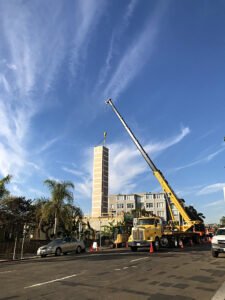
Those discussions will lead to a new perspective on the mysteries of the elevator industry and demystify it so you can make better decisions for your your specific project or projects.
That reformation of the elevator industry may lead to increased sales… or it may not. But we feel with more trust in the elevator industry it will improve our odds. So, if you have a project coming up and a low to mid-rise elevator is in the plans, but you need a discussion please contact us. Whether you think a modular elevator is the solution of not, we will discuss your project to help you. A great place to start and for simple numbers to compare costs, click on the button below for a FAST TRACK QUOTE. That will being the dialog.
Also, part of our effort to be transparent includes a live virtual tour of our manufacturing facility. Click that button to sign up.

Dirty Little Elevator Secrets II – Hospitality Needs the Best Lead Time – Usually, I try to begin a post with a soft approach. It pulls the reader in and makes for a better read. But there is no soft-peddling or easing into this one. Plainly put the MEM Elevator System has the best elevator lead time in the construction industry today. It really is that simple. Once all the preliminary work is complete we can deliver a fully installed, ready to start up, commercial quality elevator in less than 6 months. Crunching that lead time is exactly what the hospitality industry needs (See our latest project at a Disney Resort). With all that in mind we are cluing you in to Dirty Little Elevator Secrets.
But beyond delivering a fully installed elevator when you need it, when it comes to hotels all your specific requirements can be addressed with the MEM Elevator System. Ultimately, for low and mid-rise projects there is no better option that has the reliability and flexibility you need. This includes all building types including modular, storage containers, stick-built, reinforced concrete or any other type of construction.
We can produce elevator cabs to any specs you wish and glass elevators are easy, for us. The units can be for new construction or retrofit projects. They can be on the exterior of the building or on the interior. Placement doesn’t matter. MEM can provide exactly what you need.
Here’s a dirty little elevator secret – With our process you get your elevator when you need it. A fully-installed high-quality commercial elevator can be placed on your site in less than four hours.



It is a real simple process. We know precisely how long the manufacturing process takes from start to finish. You tell us when you would like the unit or units delivered and we back the start of manufacturing to meet your schedule. That easy.
You keep us updated regarding any changes so there are no surprises. When the start date rolls around we manufacture the hoistway and wrap it in the appropriate amount of drywall per code. Then the elevator rails and entrances are installed. Simultaneously, the cab is being built to your specification. All the wiring is being completed. Then the cab is inserted, final prep is done and your elevator is delivered and ready for start up and inspection.
It is more than time to end all the headaches you face with the elevator portion of your project. There is no reason it has to be so complex and filled with so many problems and delays. We have started a revolution with our design and process so join the revolution.
Click the button for a Fast Track or schedule a LIVE VIRTUAL TOUR.

We Are More Than Modular – With the big win at the World of Modular conference where we won two trophies, it is easy to think our MEM Elevator System is only for modular construction projects. Yes, the first place Award of Distinction was for a park concession area that was built totally with shipping containers. And the runner up Award of Distinction was for a traditional modular build. But don’t let that fool you into thinking that Modular Elevator Manufacturing creates its award winning elevator solutions for just the modular industry.

Far from it. All sectors of the construction industry can benefit from the easiest, fastest and most cost-effective commercial quality elevator solution. It is for everyone. Our projects can include retrofit elevator installation to new construction.
One of our recent retrofit projects was placed on the exterior of a production facility. It went up so quick that the construction elevator was taken down with the benefit of the savings going to the owners. The elevator could have just as easily been placed in the interior of the build by cutting a hole in the roof and lowered into place.
Another application that is not modular is for parking garages. The MEM Elevator System can be placed along side the structure for a fast and easy way to meet code and provide vertical transportation.
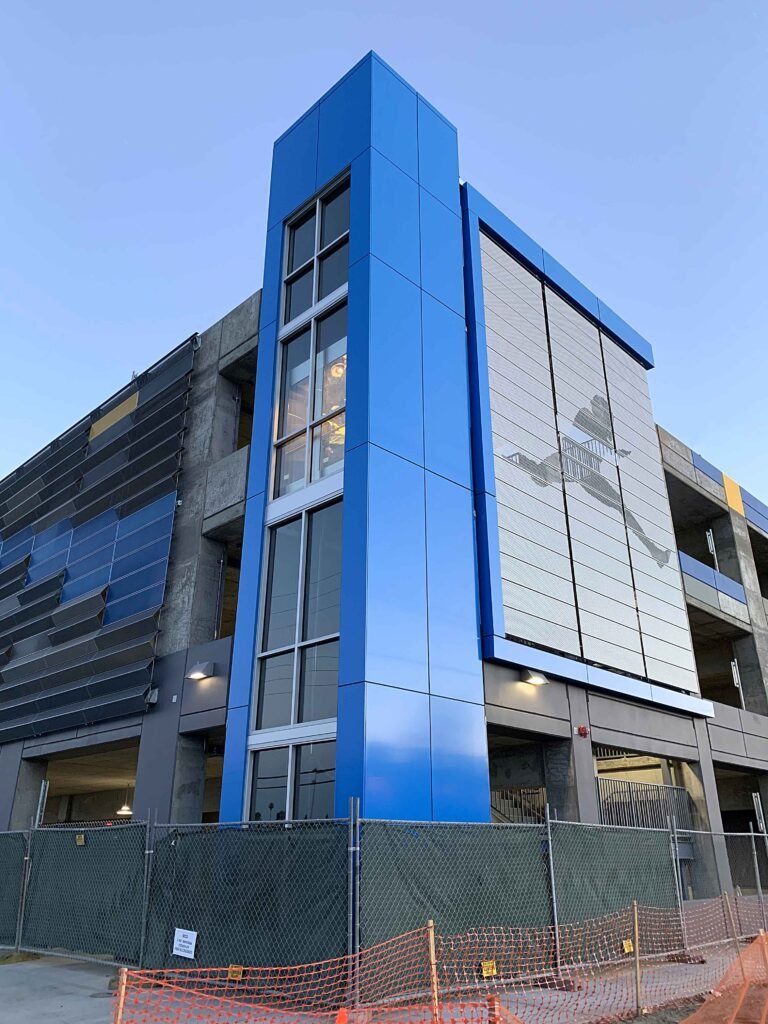
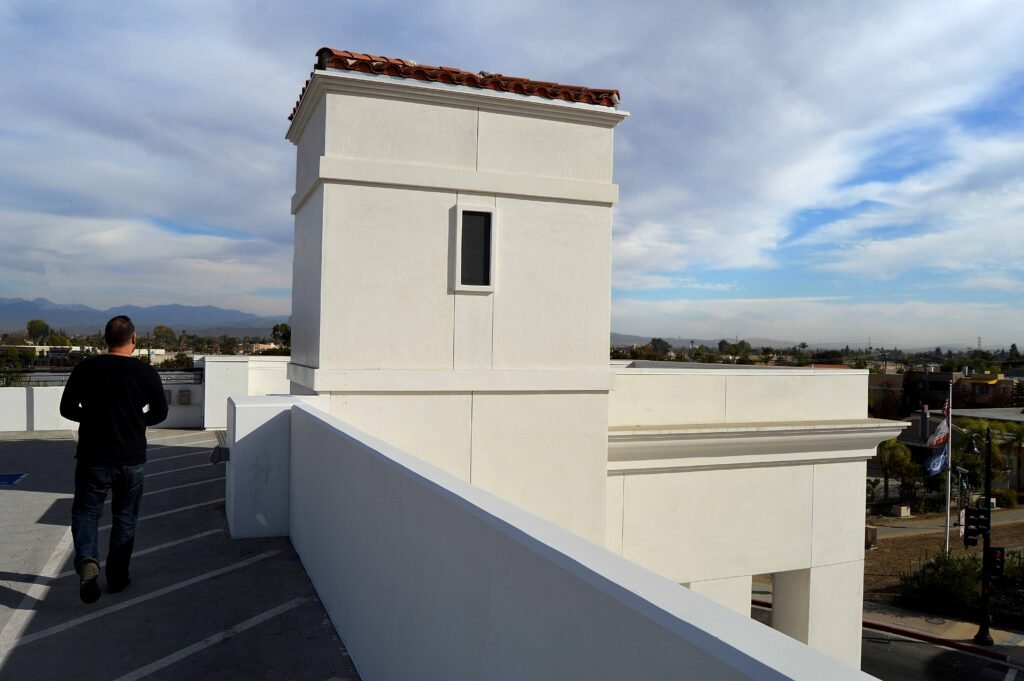

Traditional construction methods are employed in a wide range of vertical markets and we can help meet those needs as well. Hospitality, commercial spaces, schools, and medical facilities all have used our solution with great success. You can see some of them below and here in our gallery.
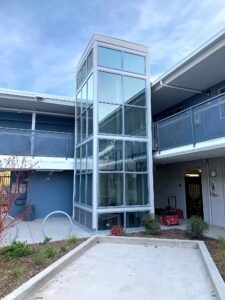



The reason for its popularity and that it has largely found market acceptance is the MEM Elevator System has significant benefits over traditional elevator installation:
So the bottom line is that we are grateful for the recognition. It is confirmed, we are the leaders of the modular elevator revolution and our recent awards prove as much. However, what means more to us is that we can provide a much needed solution to vertical transportation woes.
If you want to join us in this better way, regardless of your project, contact us. We can provide a solution for all low and mid-rise applications. To find out more click the button below and schedule a live virtual tour of our facility. If you have a project in mind, start the process by requesting a Fast Track Quote.


Modular Elevator Footprint – Often times when comparing the revolutionary MEM Modular Elevator System to traditional elevators the modular elevator footprint size comes up as an obstacle. This is especially true regarding interior placement. In this blog post we compare how much space is taken up in an apples to apples comparison.
There is a lot of confusion over exactly how much space the hoistway will ultimately require. To clear this up we went to our valued California partner TLShield for answers.
Senior Sales Executive, Craig Braund is a leader in the elevator and construction industry. He is known for using clear communication to solve problems for a variety of builders and architects. He took the time to examine the statement and question:
A modular elevator footprint takes up more space than a conventional elevator. Fact or fiction?
Coming to a conclusion on this question can be important. Especially to builders, architects and contractors when they consider switching to a modular elevator in the interior of a building. They like the fact that the modular elevator is off the critical path. It also saves time on the job and ultimately is a cost savings. However, switching from a conventional elevator, already designed in the project, to a modular elevator can be a hard decision to make. This is especially true when they are presented with the inside pit dimensions. This is because they believe they will have to totally redesign the building space for the elevator by a foot on each side to fit the MEM Modular Elevator System in.
But below, you can see that isn’t the case.

A typical 3500G (Gurney) conventional elevator has an inside pit / hoistway dimension of 6’-11” x 8’-6”
The MEM Modular Elevator System HW-2 3500G (Gurney) has an inside pit dimension of 7’-10 1/4” x 9’-6″
But is the required building space really larger? Here’s where it gets interesting.
The hoistway walls on a conventional elevator are typically between 7” and 8”. So the actual overall outside dimension (using 7” walls) of the elevator and hoistway is 8’-1” x 9’-8″.
A HW-2 3500G MEM Elevator with a 2-hr fire rating has a overall outside dimension (outside steel plus 2 1/2”) of the elevator and hoistway of 7’-9” x 9’-4 3/4″.
So in reality, an interior MEM Elevator actually takes up less building space. When the hoistway walls are utilized as building walls as done typically. The good news? No major redesign is necessary at all.
Therefore the answer to the “fact or fiction” question is… fiction. The modular elevator footprint is actually smaller.

If you have been holding back on considering the MEM Modular Elevator System because you thought interior placement was a problem with the modular elevator footprint size, we hope you reconsider.
As you can see we are a great option. We can be your solution to taking the elevator off the critical path. Additionally we can provide you with time and cost savings. To explore more you can click the button below. Sign up for a LIVE VIRTUAL TOUR of our facility where we show you how we produce this revolutionary product. If you have a current project and would like to explore more with pricing click the Fast Track Quote button.
We would be glad to have a conversation and help you with a solution to your vertical transportation needs.

Elevator Forum Produces Results. For those of you who are new to Modular Elevator Manufacturing (MEM) we are an elevator manufacturer. But not your typical company. We are trying to foster a revolution in an old industry that has not changed in 150 years. To help in that effort, we have sponsored a poll about the elevator industry so people in the construction industry can let us know the challenges they face when an elevator is part of their project. You can still participate by clicking the button below. It is just five short questions.

We then take those results and further define the issues you face by holding an open forum and clarifying the issues. The next step is then to make an honest effort to reform an industry in desperate need for a revolution. We will make changes to how we do things but also publish important information that you can use across the industry regardless of who you choose for your vertical transportation needs.
One vertical industry at a time we will be offering these opportunities for change. Our first was a success with the parking garage industry. The results of the forum were not surprising, but interesting to say the least.
First, when we said we were having a free and open discussion, we expected people to strain to participate with a largely one-sided conversation. Nothing could be further from the truth. We went through each of the poll questions and listened. To our surprise there was a lot to hear.
For instance when we asked specifically about time of completion and the elevator’s impact we were shocked at the candor.

The elevator installation “Usually creates major delays” to “Usually creates some delays”.
This is a major pain-point for the builder and the elevator industry.
Discussing that single issue propelled a discussion that elevator manufacturers need to hear more about. It seems that the overriding thought from builders across the construction industry is that the elevator installer are actually looking for ways to leave the jobsite. That leaves timetables for completion unpredictable.
It turns out that elevator mechanics once they get on the site are often looking for ways to get back off the site as fast as they can. We know many of the major reasons that occurs. An emergency somewhere else is a good reason if true. But they become more difficult to swallow after that and seem more like excuses. Examples such as it is too hot or too cold in the hoistway or shaft has led to a running joke in the elevator business (especially in colder climates), the technician watches the thermometer more than the time clock. If it drops below 55 degrees, time to go home.
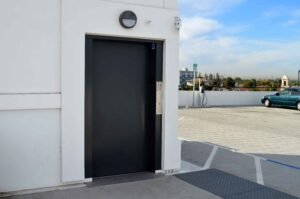
The elevator company will sometimes come clean with an acknowledgement they double booked or they are trying to finish up another job somewhere else.
You will hear that they don’t have all the parts they need.
But a new reason to abandon the jobsite from wayward elevator mechanics came to light as well. I had never heard this one before. It is too dusty in the shaft. That was a new one on me.
Overall, because of a lack of trust in the industry as a whole or lack of trust in an individual company, builders are just not buying it.
This discussion led to the most damning indictment of the whole conversation. The elevator company is just looking for reasons to leave the site and they are not team players.
“The elevator industry generally takes the opinion, too bad.”
The feeling of the group in the forum was that everyone in the construction trade from plumbers to electricians have failings; they double book, they fall short in deadlines and have cost overruns. But after its all said and done they do their best to finish the job on time as promised. The other trades think through the problem or through the difficulty and work with the rest of the team to pull it all together.
That may or may not be an accurate picture, but it is the perception. The elevator industry generally takes the opinion, too bad. That has to stop.
I always hate using football as an analogy, but it fits here. When I was playing I could miss a tackle or a block, miss a read or blow an assignment, but if I did everything I could for the team to be a success it was forgotten (usually after 100 down and ups). It is true that I might have to ride the pine, for a game or miss a first-half, but all was forgiven. I was welcomed back. No one was never endanger of being kick off the team for a mistake.
The elevator industry has a habit of acting like they can do what they want, when they want and there is nothing that can be done. Mistakes are common and often and little effort is made to make them right. If this keeps up they are going to find themselves kicked of the team.
But the time for change is coming. A revolution is starting. It may begin small, but we are hoping to detect the pain-point through the polling and forums and then lead to find solutions. It is going to take honest communication throughout the construction industry from architects to elevator maintenance companies, but change is on the way.

And this leads to the final point where we usually turn all this information into a pitch for our revolutionary product. Yes, you can click the links below for more information if you want, but that is not the purpose.
If you want to be a part of the elevator revolution and improve the way the elevator is placed, designed, started up and maintained we invite you to be a part of the solution. You can start by taking the simple five question poll. It will only take a couple minutes. You can then contact us and ask to be included on future phone conferences. We will discuss the poll in its entirety and you can have a hand in influencing the future of the elevator industry.
If you want more information about the MEM Elevator System just click the link below.

Understanding the Elevator Industry – The elevator industry seems like a tough nut to crack. They tend to keep to themselves with their own language and their own priorities. They do not even like to talk about anything beyond your need for them. And so far the cloud of mystery is working pretty well. Motivations remain obscured. The technical jargon overrides any conversation. The result is the construction industry remains beholden to just a handful of providers. This is despite the elevator being a rather simple product. One box going up and down inside another box.
But can it really be that simple? It is more complex than that for sure, but the obfuscation by the elevator industry does not help their reputation.
In this blog post I am going to uncover just a few truisms of the elevator industry from the inside. In that way you will understand them or us better. Then you will be able to make more informed decisions regarding vertical transportation. So, here’s the short list. They may shock you and shake your current understanding of the elevator industry, but here they are. I will write about each in more detail below:
Now let me be clear, I am not passing judgement on the ethics of elevator companies. It is just important to understand the industry better. Our hope is that this will allow you to make better choices on your next project.
For most manufacturers, when you buy the product it ends the process. You have what you want. They have what they want (in the form of payment). Both go separate ways unless there is a problem. Not so in the elevator industry. It became apparent early on that there is a ton of money to be made in maintaining elevators. Also, as the product improved over time, it became even more profitable. The parts became more reliable and standards improved. The maintenance contract was born.
To substantiate that point, Otis in a recent SEC filings said, “New Equipment and Service, which, for the year ended December 31, 2019, contributed 43 percent and 57 percent of our net sales, and 20 percent and 80 percent of our total segment operating profit, respectively.”
Did you get that? That means is that new equipment or elevator sales while important are no where near as profitable as the maintenance contracts. Why does this matter? Because selling a type of elevator that maximizes profitability in the maintenance contract is the goal and not necessarily what you need.
One real quick example. In a low rise project often the most cost effective and best functioning elevator is a hydraulic unit. Of course that depends on several factors. Yet people have been upsold and bought a traction unit (one with ropes) when one is not needed in the least. The cost of the maintenance can be three times as much for the traction unit.
Understanding that can change perspectives on the unit required. And there are many other factors that can be influenced with that knowledge. One certainly would take more time to consider the maintenance contract and care less about the up front cost of the unit.
An often overheard phrase regarding elevators is whether parts and components are proprietary or not. Proprietary in the elevator industry does not generally mean what it does in most other industries. Proprietary components outside of the elevator business usually indicates something special. It is something that sets one product apart from the others. Or it can mean something they want to keep secret from the competition.
Not really the case with elevators. The purpose of “proprietary” parts in the elevator industry is not to hide some special trade secret or technology. After all it is just a box that goes up and down in another box. It is to prevent the building owner from hiring a different company to maintain the elevator. As mentioned above that is where additional profit comes from. If proprietary parts did not exist, any elevator technician could service any elevator regardless of brand. Proprietary parts primary purpose is to keep you locked in. Unlike most any other product, you just can’t buy a different elevator once the one you picked is in place. They have you and they know it.
Never shackle yourself to an elevator company by using proprietary parts. Ever. There are alternatives.
Have you ever been to a factory? I have had the pleasure of touring all sorts of manufacturing plants in my life time. From sausages to automobiles I have seen it all. In those facilities it is much like what you imagine. A product starts out in a simple form traveling down a line. During the trip components are added or processes completed. At the end, like magic, a brand new car rolls away or a delicious link of smoky pork sausage is made table ready.
If you are thinking about saving time and trimming costs, the traditional elevator cannot be your solution. Why? Because your jobsite just became an elevator factory.
That process is not what it looks like for big elevator companies. They do produce some components, but in real terms they are bundlers of other companies parts and pieces. They crate them, ship them and cobble them together on site. But the elevator is not manufactured at all, and the parts they actually make are limited. Believe it or not elevator companies have admitted that the real “manufacturing” takes place at the jobsite. The parts for all elevator companies come from a very limited pool of actual manufacturers.
It would be like ordering a car from Ford but instead of a drivable vehicle its like getting a crate delivered with all the parts. Then, they would send a crew to assemble it in your drive way. That is how traditional elevators are created.
This is important because a “quality” sales pitch is nothing more than that unless there is a different process all together. All elevator parts are largely the same and where they differ, they still have to meet the same rigorous standards. Could you imagine the quality issues and interruptions if your car were assembled in your garage? It really is crazy.
Why does that matter right? Really, why does it matter where the manufacturing takes place? It matters because that explains why it takes so long for an elevator installation. Also, if you are thinking about saving time and trimming costs, the traditional elevator cannot be your solution. Why? Because your jobsite just became an elevator factory.
If you choose a traditional elevator company, you will be a lot better off mentally if you just accept the way they do things. Then resign yourself to handing your site over to them until they are done. Things cannot change because the process does not change. You will never be able to hurry a project or even predict a completion date through the traditional elevator company. Believe it or not they have been installing the same way since before the Civil War…our Civil War…in the US. No other industry has moved that slowly regarding innovation.
Why are there delays? Because for the elevator to be assembled, you have to have the right factory conditions and all the necessary parts at your jobsite. One missing part can mean days of delays. If the building gets too cold the elevator crew leaves. This all slows down the process and gives little room for real improvement and no control.
The reason you have lost control of your project is it is now a manufacturing factory for an elevator.
This is usually where you would find the pitch. I have made a compelling argument now I just need to close the deal right? Wrong. At Modular Elevator Manufacturing we know the MEM Elevator System is a much better alternative than traditional elevators, but we also know that acceptance will not come overnight.
The traditional elevator companies are engrained in the construction industry. We know this! So although we care about sales, we care more about the long run. Education is the key. We need to simply inform people as to why things are as they are. Over time we will be viewed as the solution we are and we are willing to accept that. In the mean time we want to be a part of the discussion, a resource and able to give important elevator industry information. We are hoping to bridge the gap between the construction industry and our industry that will lead to better processes, innovation and installation. Our better way through modular elevators will win you over eventually. The MEM Modular Elevator System is actually factory produced and have tons of benefits, but we know recognition of that comes with time.
However, if you want a tour of our facility just click the button below. You can also request a quote if you have a project in mind. We would be glad to supply you with thumbnail numbers.

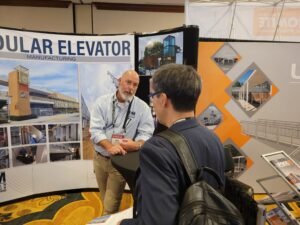
You learn a lot by listening. Like mom always said, we have two ears and just one mouth for a reason. So, last week at the World of Modular conference held by the Modular Building Institute we got a chance to listen.
We found out what people were thinking when it came to elevators from their perspective. How does the architect, engineer, project manager, owner or designer really feel about elevators and the elevator industry? And especially what do they think of modular elevators.
Well let’s be blunt, we did not hear many positive things about the elevator business as a whole. Some folks actually joked we were the most hated industry at the conference! Wow tough crowd. But I can see why.
See in simplest terms people in the construction industry know an elevator is just a box moving up and down inside another box. You have a cab, a hoistway or shaft, doors, a control system and a means of conveyance. Pretty simple. But, when it comes to making all of the intricate pieces of the puzzle to work together in a project, that is the hard part. And thankfully that is our specialty with experience and knowledge with decades in both the elevator and construction industry.
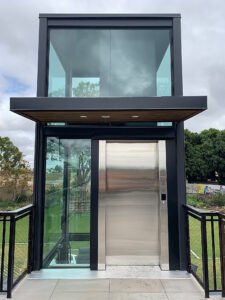
Unfortunately, though many have been led to believe (by elevator folks) that the elevators are the difficult part of the equation. Couple that with a reputation for unresponsiveness and you have a recipe for agitation and mistrust. Hence the negative comments about the elevator industry.
Overall we got much higher marks for the MEM Elevator System and innovation, flexibility and responsiveness. Those we spoke to realize we are different from others in the elevator business and that even high-quality modular elevators are relatively easy…it is the project integration that is complex and that is where we have an opportunity to shine.
So why are things seemingly so cloudy and murky in the elevator end of the business? Why all the hate? There are several reasons and believe it or not it often earned and not all an evil plot (just some of it is).
The Modular Elevator Manufacturing Elevator System is different. When you are talking to someone about an elevator at MEM, you are talking to the project manager. Your elevator is not going to be passed around like a hot potato. Also, from the outset your elevator and your project are combined. That means one person is working on the details.
So the World of Modular conference presented by the Modular Building Institute was a learning and listening experience. We hope that we were able to hear what you were saying and you see us as your elevator solution. MEM is doing things differently and is starting an elevator revolution where easy, fast installs are the norm and all the details worked out ahead of time. Is it time for you to join the revolution? It is never too late.

As you make your elevator choice remember the MEM System is perfect for any low or mid-rise application and it is very easy to set and start up as we take care of the heavy lifting.
The MEM System is commercial quality elevators installed when you need them in about four hours. They can be started up once we have power and can be used as a construction elevator. Also, they are not just for modular building. Any type of structure can utilize our elevators as a way to get quality installed quickly and off the critical path.
It is time to change how things are done and seriously consider modular. The Modular Building Institute is a great resource if you have questions in general. Or if you would like more information about us specifically and how we can ease some of your elevator pain points feel free to contact us. If you have a project in mind, to get the ball rolling just click the Fast Track Quote button below. You can also see how we produce our elevators with a Live Virtual Tour of our facility. We would love to show off a bit so sign up today.

New York elevator set over the holidays. While most businesses slow down between the last couple weeks of December and January 1, MEM’s schedule picks up. That slow period for most (especially schools) is the perfect time to install a complete elevator in less than four hours with the MEM system. Because they install so quickly there are minimal interruptions that you will find with traditional elevators.


A great example is a project we just set in New York. The Ateres Girls School was a perfect fit for us. The MEM system for the school is an above-ground hydraulic unit with a 25000lb. capacity and 16′ travel distance. It went in easily and smoothly.
That not only speaks to the product and our production team, but also the professionals at Nadler Modular that led the project. They made sure everything was ready and therefore the project went off without a hitch.
A modular project is not a requirement. Even with the elevator placed on the exterior of the building, that is not a always necessary for our elevators. MEM elevators can be placed in any type of construction project. And be placed on the exterior or interior. If you are looking for a vertical transportation solution for any low or mid-rise application we have what you need.
To make MEM a part of your next project just click the link to find out more or get a FAST TRACK QUOTE.
Never miss a blog post again. Sign up for our monthly email newletter. Get important information about elevators, the modular industry and more.
